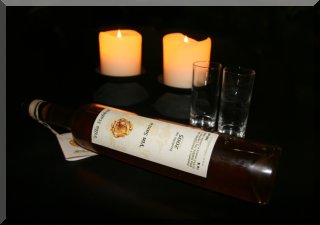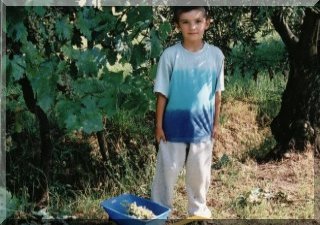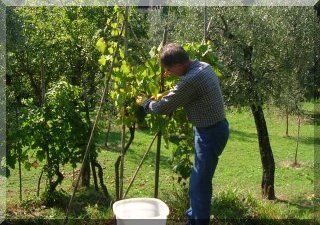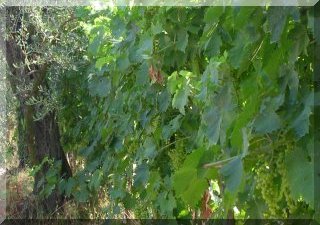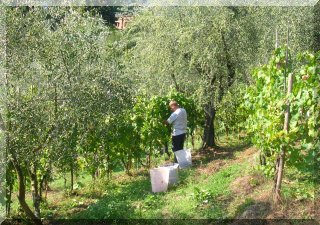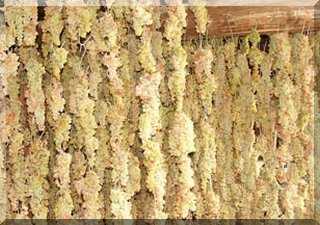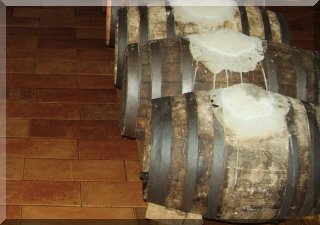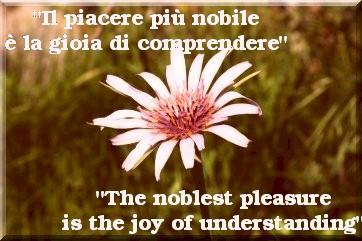The Vin Santo from Villa Stabbia.
Italy's "holy wine" Vin Santo, is one of the most ancient and typical products of Florentine and Tuscan oenology.
The grapes for this authentic Vin Santo from Villa Stabbia is based solely on trebbiano. It is made exactly as it has been done for centuries and is one of those rare gourmet products that small farms occasionally produce. The best white grapes are selected and placed on cane mats in a fresh room above the garage to partially dry for four months and are subsequently pressed and made into wine. The wine is stored in Oak barrels (caratelli) for 5 to 6 years.
The production on the farm is organic, and thus the grapes are organically grown and the Vin Santo is organically made - however the production is way to small to have it certified organic.
The resulting wine has an alcohol content usually around 17 degrees and an intense amber colour. The typical odour of the "Vin Santo" comes from the strongly raisined grapes: spices in general, dry fruits, particularly figs and apricots. The taste is harmonic with a good balance between alcohol, sugar residues and acidity.
Please contact us if you would like to buy the Vin Santo from Villa Stabbia.


